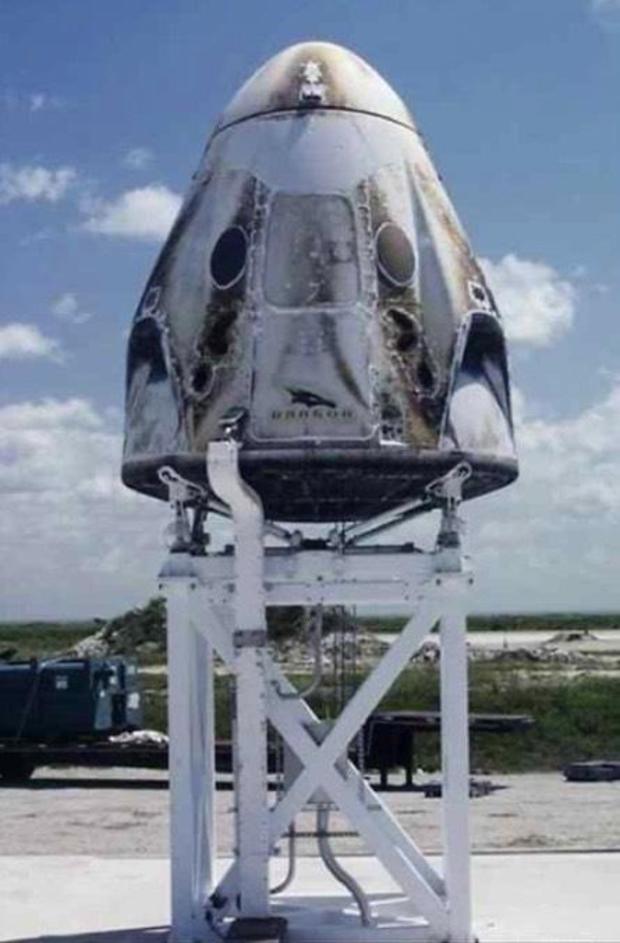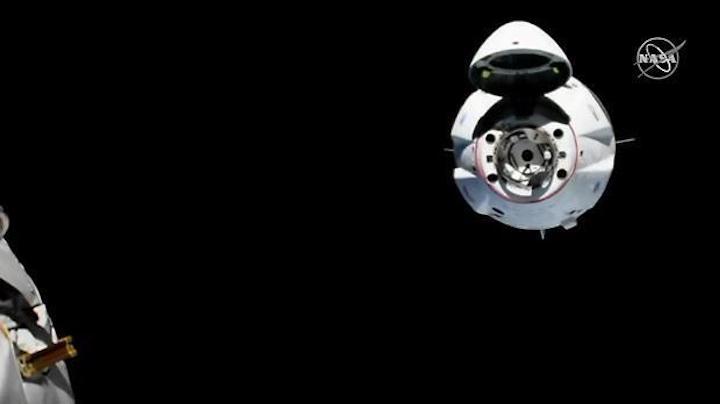30.05.2019
NASA says there's a chance SpaceX can launch two astronauts aboard the company's Crew Dragon capsule by the end of the year. But that assumes changes needed in the wake of a catastrophic test failure can be implemented in time.
SpaceX successfully launched an unpiloted Crew Dragonto the station in March on a mission known as Demo 1 and was gearing up to launch that same vehicle on another unpiloted mission in June to test its emergency abort system. That test was intended to clear the way for an initial test flight -- Demo 2 -- with astronauts on board later this summer.
But on April 20, the Crew Dragon slated for the in-flight abort test exploded on a test stand at the Cape Canaveral Air Force Station an instant before a planned static firing of the capsule's eight Super Draco abort engines. No one was injured, but the Demo 1 capsule was destroyed.

Speaking to the NASA Advisory Council, Kathy Lueders, manager of NASA's commercial crew program, said the capsule originally intended to carry the first astronauts will now be used for the in-flight abort test and another downstream capsule, originally planned for the first operational Crew Dragon flight to the ISS, will serve as the Demo 2 vehicle.
While not providing any details about the cause of the explosion or what corrective actions might be required, Lueders said SpaceX is working to get the newly assigned Demo 2 capsule ready for flight "by the end of the year," processing the spacecraft in a way that will allow engineers to make downstream changes as needed.
"We need to close out the anomaly investigation," she said when asked about the schedule. "I think that's the big thing, we've got to make sure we've really taken our learning from this anomaly investigation and made sure that if we need to make a change to the vehicle that it gets done. I think that's the big thing.
"And obviously, we've still got to get through some more critical tests. Getting the in-flight abort test done is going to be a big deal for us. And then we've got parachute testing. Right now, there (are) no non-critical tests, all the tests are big. But SpaceX is working to get that vehicle outfitted and ready to go and have launch vehicles ready to go by the end of the year."
At the same time, Lueders said SpaceX is readying what used to be the Demo 2 capsule for the in-flight abort test "by the end of July," again assuming the failure investigation pins down the cause of the April 20 mishap and corrective actions are implemented.
SpaceX is leading the failure investigation, with direct NASA participation, and virtually no technical details have been released to date beyond confirmation the vehicle was destroyed in an "anomaly" that occurred an instant before the planned ignition of the Super Draco abort engines.
NASA Administrator Jim Bridenstine said in an interview with CBS News last week that SpaceX's perceived lack of candor in the immediate aftermath of the test failure was not acceptable and promised more timely updates in the future.
"The communications that came from that, in my view, from their side was very poor, and it can't happen again that way," he said. "People need to get a better understanding earlier in the process, and NASA needs to be involved in making sure they're communicating what's happening."
But, he added, "what we don't want to do is get out wrong information because we went too fast."
"NASA and SpaceX, we have some really good ideas on what the core cause was, but we want to make sure we get it right before we go forward because if we don't have it right, then we'll have to put out new information and create even more confusion," Bridenstine said. "Which we don't want to do."

The Commercial Crew Program is the end result of a series of NASA-funded industry competitions in the wake of the shuttle's retirement to develop a new American spacecraft to carry astronauts to and from low-Earth orbit.
NASA has awarded Boeing multiple contracts totaling $4.82 billion to develop a commercial crew ship now known as the CST-100 Starliner, a capsule that will launch from the Cape Canaveral Air Force Station atop a United Launch Alliance Atlas 5 rocket.
SpaceX also won a series of contracts totaling some $3.1 billion to date to develop a piloted version of the company's Dragon cargo ship. The company holds a separate cargo contract valued at $3.04 billion for 20 space station resupply flights and another contract for an unspecified amount for at least six additional flights through 2024.
Lueders said Boeing, which has suffered its own test mishaps, hopes to be ready for an unpiloted test flight by the end of August. First launch of a CST-100 with astronauts on board is planned for late this year.
